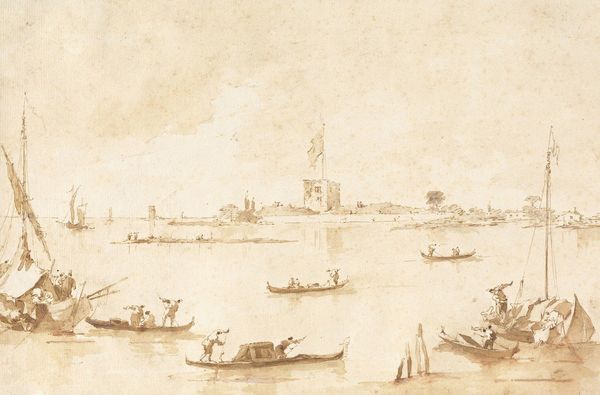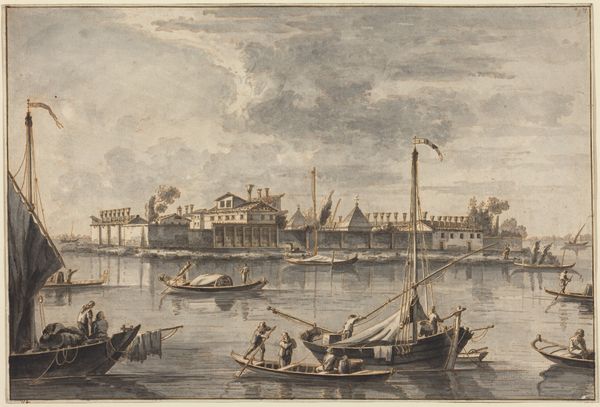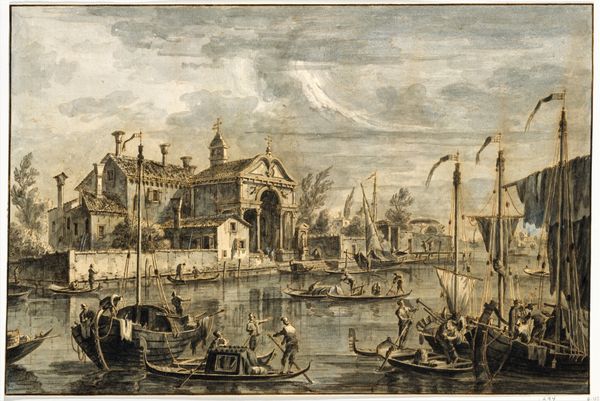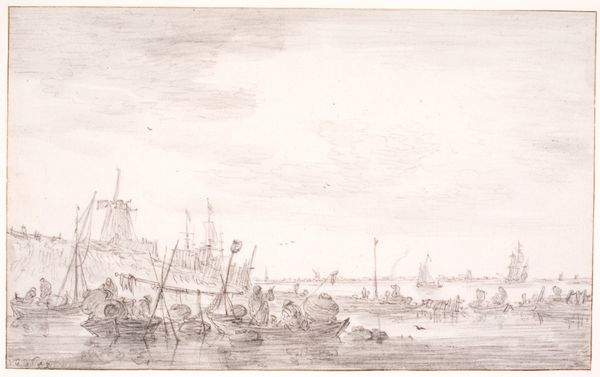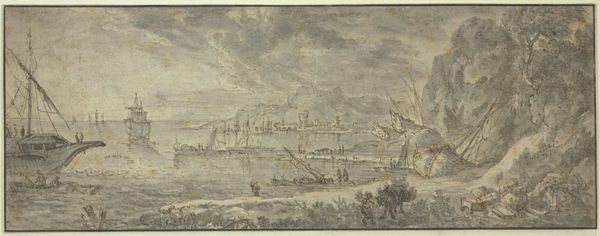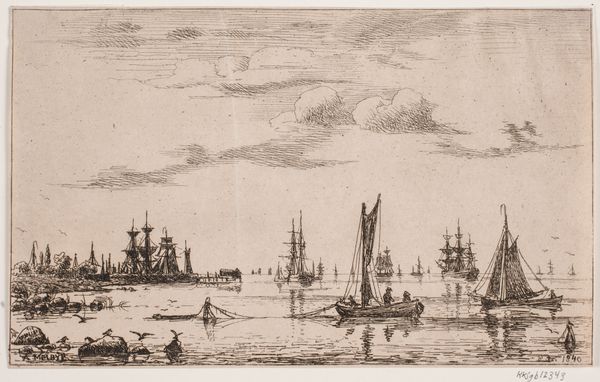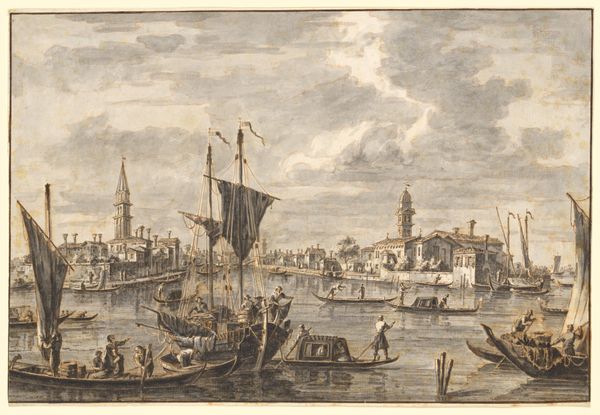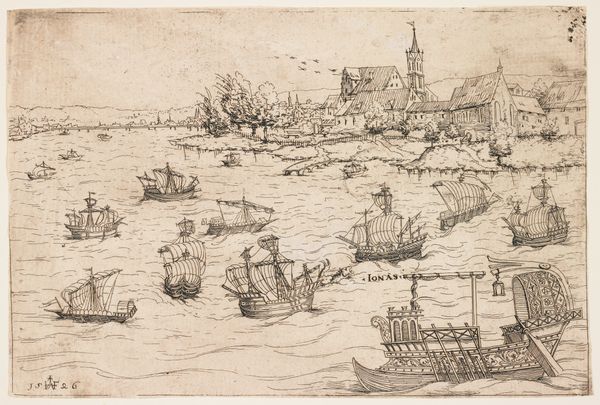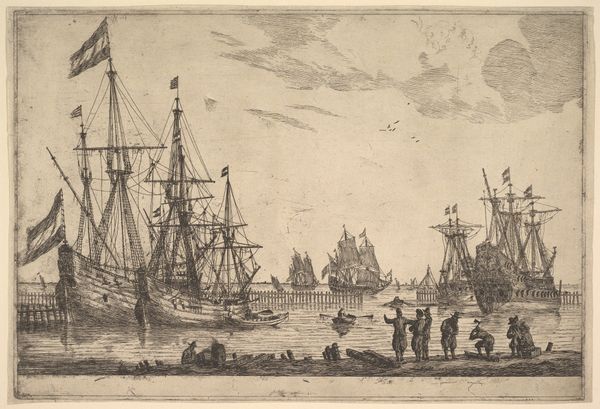
Dimensions: overall: 38.7 × 55.5 cm (15 1/4 × 21 7/8 in.) support: 46.3 x 63 cm (18 1/4 x 24 13/16 in.)
Copyright: National Gallery of Art: CC0 1.0
Editor: Here we have Canaletto's "Ascension Day Festival at Venice," created around 1765 using coloured pencil. It feels both grand and incredibly detailed; you can almost hear the sounds of the festival. What do you make of this piece? Curator: Let's consider the material reality. Canaletto's choice of colored pencil and drawing is fascinating. It speaks to a preparatory stage, perhaps a study for a larger painting, a commodity in itself, or potentially made for sale to wealthy tourists. The precision required reveals not only artistic skill, but the specialized labor involved in creating such detailed representations. Do you see how the cityscape, seemingly celebrating Venetian power, also reflects the economics of art production itself? Editor: So you’re saying the artwork itself is part of the economy it depicts? Curator: Exactly. Look at the repetitive patterns in the boats, the almost industrial way he renders the crowds. It suggests a system of production – both artistic and economic. Consider also, the availability of materials, where they came from, and the socio-economic systems that supported their acquisition and use by the artist. This isn't just a pretty picture of Venice; it's a document reflecting the city's material conditions. Editor: That's a really interesting way of looking at it. I hadn’t thought about the coloured pencils themselves as part of the story. Curator: Precisely. And what kind of labor was involved in crafting these vessels, adorning them, or propelling them through the canals? Each mark signifies not just artistic vision but also the embedded social hierarchies. Editor: This definitely makes me consider all the hands that contributed, directly and indirectly, to the final image. Curator: Indeed, and it begs the question: what’s being bought and sold in this image, both literally and figuratively? Editor: I'll definitely look at art with a more critical eye on its means of production moving forward. Thank you.
Comments
No comments
Be the first to comment and join the conversation on the ultimate creative platform.

